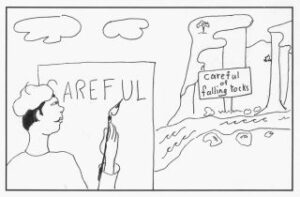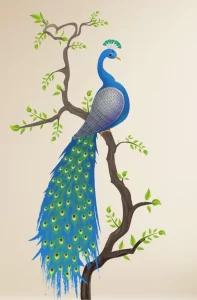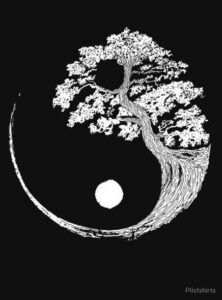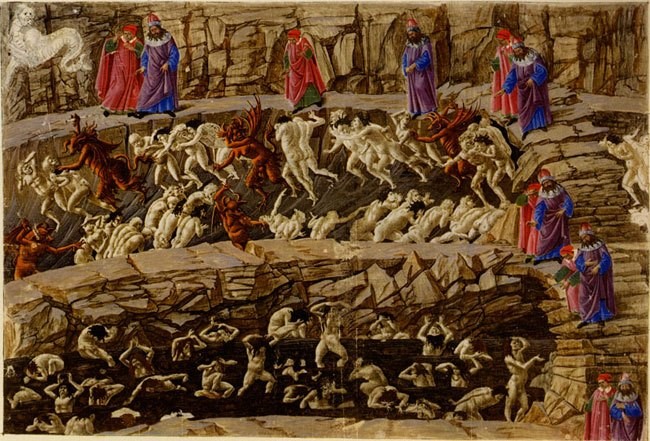In the last two weeks of this term’s enneagram for therapists group I have been facilitating, we are turning toward the “path quality” that the enneagram offers. What makes the enneagram so much more than a personality typing system is how it points to both our blocks to wholeness, and how to lever back into that wholeness. In enneagram speak, this is the journey from each Type’s PASSION toward a manifestation of the VIRTUE.
 Type One – a journey from ANGER to SERENITY
Type One – a journey from ANGER to SERENITY
Type Two – a journey from PRIDE to HUMILITY
Type Three – a journey from DECEIT to VERACITY
Type Four – a journey from ENVY to EQUANIMITY
Type Five – a journey from AVARICE to NON-ATTACHMENT
Type Six – a journey from FEAR to COURAGE
Type Seven – a journey from GLUTTONY to SOBRIETY
Type Eight – a journey from LUST to INNOCENCE
Type Nine – a journey from SLOTH to RIGHT ACTION
Whilst setting up the trajectory toward this, several of the group participants were curious as to how I have come to understand the move from passion to virtue. This is a very present contemplation for me: the process – one that Carl Jung called individuation, has been the theme of my personal therapy in recent months. My therapist and I have been discussing the various methodologies we have on hand to facilitate self to Self – the reclaiming of lost aspects of our wholeness; the bringing together of the vastness of spirit and the depths of soul. Along with practices such as dream work, active imagination and sand play, one methodology is writing. My therapist invited me to think of writing a personal myth. On some level I feel I am still creating that arc literally let alone on a page; but the groups’ recent curiosity about my experiences of passion to virtue has added even more motivation to reflect upon the classical motifs we see across fairytale, religion, and even in the movie theatre.
It has taken some time as a (self-schooling) student of the enneagram to fully appreciate and excavate this path from passion to virtue ; for someone who identifies with Six process, this is a move from fear to courage. Historically, I would never have considered myself as someone living with fear as the fuel driving my human engine; but looking back, it does perhaps explains my behaviour of accomplishment and status (a certain Type Three-ness is the Sixes’ disintegration style) through sport, and through an academic career. No need to feel the fear of my non-existence if I kept moving quickly over the abyss! It’s also not lost on me that my entry onto the Buddhist path was when hooked by the teachings of Chogyam Trungpa Rinpoche, specifically those of the Shambhala teachings on fearlessness. In the Shambhala tradition, there is an invitation “to be a warrior; staying with discomfort, to allow our emotional experiences, however painful. To keep your heart open, rather than trying to protect.” The Buddhist tradition as a whole locates this discomfort in “passion, aggression, and ignorance”; and yet as I came to understand, the Shambhala teachings are unique in bringing fear and fearlessness to the party. Fearlessness in this sense means not an avoiding of fear, but a turningtoward it: lean into it, welcome it, and allow ourselves to fully experience it. Later on, discovering the enneagram teachings, I was struck how clearly the path is set out for the enneatype Six – fearlessness is the counter-intuitive move toward fear, embracing it. Fearlessness, or we might say courage – means not being afraid of thefear. As my all-time favourite* CTR quote says:
“The bad news is you are falling, one thousand miles an hour, no parachute. The good news, there is not ground”
one thousand miles an hour, no parachute. The good news, there is not ground”
This teaching en-courages us to feel the fear of the fall; to go with it. Fear does not lead to annihilation (or “splat”). It merely allows our hearts to break – good news, apparently 🙂
But even with these teachings up my sleeve and in my (now broken) heart, the exact mechanism(s) as to how fear becomes courage were not entirely clear to me. During the meditation practices that would invite anxiety / fear / terror**, I was still gripping on as a felt the fall. And only now, as I more completely settle into the view of the Vajrayana do I feel the “a-ha” in my bodymind, a true knowing of the task at hand.
The Vajrayana is the third ‘vehicle” of the buddhist teachings. Beforehand, the aspirant treads the path of non-harm (Hinayana), and the path of benevolence (Mayahana). The task – the reduction of dukkha, or suffering – remains the same across the 3 yanas; but each has its own upaya, or skilful means. As I share on a previous blogpost after first stepping across the threshold into the Vajrayana…
Stage 1: There is a Buddhist teaching on how to deal with a poisonous tree we find in our back garden. Probably the first thing we would be advised to do is to cordon off the tree – as that way, we keep ourselves and others safe: this is indicative of the Hinayana View i.e. non-harm.
Stage 2: Once we have stabilised the situation, we might become concerned about long-term well-being. We might find people that are willing to get involved in pruning the tree and even pulling it up from the roots: and this is the Mahayana, the path of compassion and interdependence.
 Stage 3: In the Vajrayana however, the danger is the very thing that carries the potential for healing – we could choose to eat the leaves. Indeed, it is said in the teachings that peacocks have the beautiful feathers they do because they eat poisonous vegetation. The Vajrayana is about turning toward the obstacles in life, seeking difficult scenarios out in order to transmute confusion in to wisdom. And so, as Jamgon Kontrul a Tibetan sage explains, each yana has a corresponding approach for dealing with afflictive emotions (or in enneagram speak, the passions).
Stage 3: In the Vajrayana however, the danger is the very thing that carries the potential for healing – we could choose to eat the leaves. Indeed, it is said in the teachings that peacocks have the beautiful feathers they do because they eat poisonous vegetation. The Vajrayana is about turning toward the obstacles in life, seeking difficult scenarios out in order to transmute confusion in to wisdom. And so, as Jamgon Kontrul a Tibetan sage explains, each yana has a corresponding approach for dealing with afflictive emotions (or in enneagram speak, the passions).
- In the Hinayana, we reject the emotion with the attitude of renunciation (by uprooting it);
- in the Mahayana we transform the emotion through the attitude of compassion (clearing the ground allows more virtue to take seed);
- In the Vajrayana we use the emotions to recognise our true nature that is contained within the anger, the pride, the deceit, the envy, the avarice, the fear, the gluttony, the lust, the sloth***
With the Hinayana understanding, someone might deal with anxiety by removing themselves from situations or relationships which increase / induce feelings of anxiety or the uncertainty that provokes that process: its an act of kindness to find ground where we can. Early on in my meditation path, one I entered because the stress of uncertainty was emerging in my consciousness, I recognised there were relational scenarios I could move away from; or places where I was unduly inviting strain. As the Dalai Lama is fond of saying, “If a problem is fixable, if a situation is such that you can do something about it, then there is no need to worry. If it’s not fixable, then there is no help in worrying”. The stabilisation meditation practices I learnt (like mindfulness of the breath) were of great support to see the stories that co-arise with the emotions. Calming monkey mind reveals a clarity and I came to see the story more transparently. Creating a distance between the fire of the emotion and the story that keeps it going, we can step back and stop getting so burnt. I often talk to clients who experience anxiety that the first task is reducing the flame; and then we can address the logs that keep the flames fuelled.
In the Mahayana, seeing that we are not sat alone around the fire of distress becomes a great support. This became very apparent during my therapy training and being-with-others who were also going through the ground-shaking experience of deconstructing the “who and how” of self…especially within a training based in existentialism and its concern with the human predicament and arising angst. My training and therapy at the time helped me to see my suffering was not a personal failing but rather the result of the causes and conditions of my life thus far; the childhood “decisions” made to cope with mis-attunements and relational disappointments (and not forgetting the uncertainty we all experience in some shape and form). My patterning could be illuminated, understood in the context of how it emerged, and used to make a heart-felt connection to all of those who suffer like me. Passion is transformed to compassion. I guess I would say that at this point, I became aware that what I was labelling as ‘stress’ was an anxiety of not feeling in control: and in becoming kinder to my self I could come into relationship with my anxious inner child. The task was one of re-parenting and holding.
Whilst both the stages so far require that attitude of turning toward emotional distress, it is the Vajrayana that epitomises Dante’s Inferno “the way out is through”: we must first descend (into hell****) to reach what is beyond. In fact, it IS the descent that enables the ascent; to reclaim our lost wisdom in the confusion of the passion. Each morning, I recite the following four line supplication before settling into my meditation practice:
Grant your blessings so that my mind may be one with the dharma.
Grant your blessings so that dharma may progress along the path.
Grant your blessings so that the path may clarify confusion.
Grant your blessings so that confusion may dawn as wisdom.
 The four dharmas of Gampopa condense the entire Vajrayana path into four lines; and those final two point to the alchemy of this yana: in coming to know ‘mind’, we can see our neurosis more clearly; and yet this confusion also contains the nugget of wisdom. In fact, the nature of confusion and wisdom is not different. Like the yin yang symbol, without the dark we would not see the light. It reminds me of my fascination and love of wind turbines – for many people, these machines are blots on our landscape; for me, not only are they the sanity of seeking a way out of fossil fuel confusion, it is their movement that allows us to see the wind. Similarly, it is our confusion that gives us an opportunity to recognise awareness; to recognise that as our true (Buddha-) nature.
The four dharmas of Gampopa condense the entire Vajrayana path into four lines; and those final two point to the alchemy of this yana: in coming to know ‘mind’, we can see our neurosis more clearly; and yet this confusion also contains the nugget of wisdom. In fact, the nature of confusion and wisdom is not different. Like the yin yang symbol, without the dark we would not see the light. It reminds me of my fascination and love of wind turbines – for many people, these machines are blots on our landscape; for me, not only are they the sanity of seeking a way out of fossil fuel confusion, it is their movement that allows us to see the wind. Similarly, it is our confusion that gives us an opportunity to recognise awareness; to recognise that as our true (Buddha-) nature.
And so, when I experience my anxiety / fear / terror, there is a surrender into that ‘descent’ of confusion. Of course, there are still moments of gripping as I fall. But like writer Mark Matousek invites, “when you’re falling, dive”; slowly over time, I am giving myself over; a cultivation of grace that has come from (and breeds) faith. It is the confusion that illuminates the very awareness that is knowing the confusion. Confusing? Try this – look at an object in the room: and now, move the focus of your attention ‘backwards’, and recognise what is aware of that object. That recognition IS the wisdom: in my Six-ing, in each moment I see the anxiety / fear / terror that ‘plays’ in awareness, that glimpse reveals the inherent courage. Another way of putting it, fear and courage are of the same energy; and like those ‘double slit’ experiments of physics, whether that energy is experienced as confusion or wisdom depends on an interference or distortion.
We might think of the enneagram virtue as what is liberated when the passion reflects back to us the ceaseless, presence of awareness. In other words:
For the Type One, when awareness is recognised through ANGER, the energy transmutes into an experience of SERENITY
For the Type Two, when awareness is recognised through PRIDE, the energy transmutes into an experience of HUMILITY
For the Type Three, when awareness is recognised through DECEIT, the energy transmutes into an experience of VERACITY
For the Type Four, when awareness is recognised through ENVY, the energy transmutes into an experience of EQUANIMITY
For the Type Five, when awareness is recognised through AVARICE, the energy transmutes into an experience of NON-ATTACHMENT
For the Type Six, when awareness is recognised through FEAR, the energy transmutes into an experience of COURAGE
For the Type Seven, when awareness is recognised through GLUTTONY, the energy transmutes into an experience of SOBRIETY
For the Type Eight, when awareness is recognised through LUST, the energy transmutes into an experience of INNOCENCE
For the Type Nine, when awareness is recognised through SLOTH, the energy transmutes into an experience of RIGHT ACTION
I would like to emphasise before signing off this week that this “methodology” is, in essence, leaving things as they are. We don’t have to do anything with our emotional experiencing other than KNOW the experiencing. That knowing is an opening, a coming into full contact with; and not having ANY expectation that experience will change (in other words, it is not a methodology with an agenda of ‘getting rid’). It is not an antidote to be applied.
Transmutation occurs in a radical acceptance of what is, “as it is”.
————————–
*Not sure feeling such fear and terror qualifies as “favourite”, more accurate, would be “resonate”
**A sacred triplet, common across those of us in the “mind triad”. Equally, the heart triad will have their own cluster (panic – grief – distress), as do the body triad (rage – anger – frustration).
***my, that reads like a list of the deadly sins..It is! Plus the fear and deceit which might actually be considered the root of all “sin”
****of which, interestingly, there are nine

